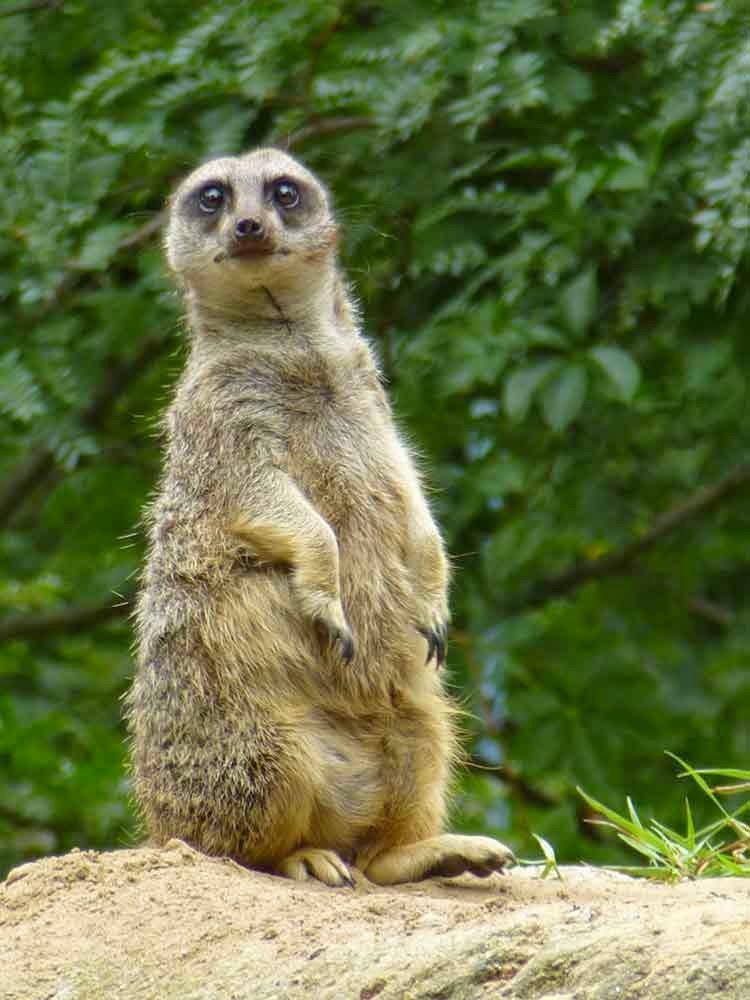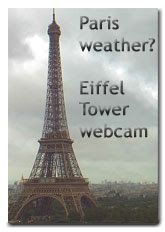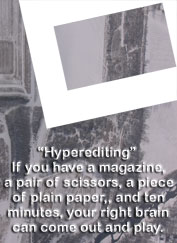.
Meercats!
A scout, with a ex-tree that looks a lot like a sculpture of a meercat scout.
When you are little, and you normally live where there are lions and eagles and snakes (oh my!), you have to be vigilant.
The Toledo Zoo has lots of meercats, including two litters born this year. The smaller ones are the young ones.
Meercats are relatives of mongooses, and mongooses can take on cobras. These guys are very fast. Catching them still is the only way to avoid blur, with a normal camera....
Most of my pics of the young meercats are blurry......
Practicing vigilance....
Watching for eagles.
It's best to have someone looking in every direction....
Two lions at the zoo. "White" ones, donated by Siegfried and Roy. I'm pretty sure we heard one roaring, when we were watching the meercats.
Model pterosaurs. I looked at these teeth, and remembering what I learned in Dino 101, I thought -- piscivore! ("fish-eater").
Teeth like this help hold onto a fish when one is trying to fly as well as catch fish.
Another member of our party saw the information placard for this critter and suggested I might want that info. Well, yes. Yes, I did.
It says that this is Anhanguera, and it hailed from Brazil. It was full of air sacs (which is a different way to process air from mammalian lungs, which enabled it to get enough oxygen to keep up powered flight (which is how it could fish from the air). It had 9-13' wingspan. I am not sorry we don't share the planet with these..........
Speaking of things that it's ok with me are extinct -- look at this! I had no idea that pterosaurs got this big! Adult men were about at the level of this model's shoulder! I did not, alas, see or record the info about this one. Assuming the model is life size, this was a really big critter! It's cool to see how it may have walked on land.......
I wonder why it needed that enormous beak.........
And I wonder who left the bucket in the exhibit...........
(Digression: I'm behind on listening to Emergence of Life (on Earth). I'm listening to week 6, which was last week's material. Right now, on Aug. 31, I'm listening to lectures about the development of flight, which occurred three separate times in vertebrates: pterosaurs, birds, and bats. I'm kind of wishing I paid more attention to the other pterosaur models in Toledo! Maybe next time we visit the zoo......... End of Digression.)
The pterosaur models are in the reptile house at the Toledo Zoo.
Here's a reptile of today.
If I recorded the right info, this cool-looking turtle is a black-breasted leaf turtle, and may be found in the wild in Vietnam, Okinawa, Borneo, south China, and Sumatra, though it is being hunted to extinction. It seriously looks like a green and turtle-y E.T., I think.
I don't suppose I'll ever see another turtle without thinking that
they are the sole remnants of one of the classes of prehistoric Reptilia
-- anapsids (no holes in the skull behind the eye sockets.
(Digression:
The other two classes which have living members today are synapsids,
and diapsids. Synapsids, with one opening in our skulls behind the eye
(on each side), survive as today's mammals [including us]. Diapsids,
according to Wikipedia, "are a group of tetrapods that developed two holes (temporal fenestra) in each side of their skulls about 300 million years ago during the late Carboniferous period.[1] Living diapsids are extremely diverse, and include all crocodiles, lizards, snakes, tuataras, and birds.
Although some diapsids have lost either one hole (lizards), or both
holes (snakes), or have a heavily restructured skull (modern birds),
they are still classified as diapsids based on their ancestry." End of Digression)
This turtle is a native of Ohio. It's in the zoo, but might be found in the wild in this part of the world. It's about the same size as it's Asian cousin above -- shell about six inches long. I think it is a painted turtle.
Colobus monkey. All of this hair has to be for courting. I can't imagine it would be good for survival, otherwise..... It's interesting that the hair on his(?) back is totally straight, while the hair on his tail is a bit wavy.
There actually was plexi between us and the monkey above, but it wasn't intrusive. The fencing between us an the vulture was very intrusive, alas.
This is a seriously big bird. I bet it's a yard tall if it stands up and stretches. I love the feathers on the back/top of its skull, and the ruff around its neck. I wish the feathers were sharper in the image -- the texture of the overlap is cool...........
I don't know what vulture enrichment is, but I don't think I want to watch..........
.
Sunday, August 31, 2014
Subscribe to:
Post Comments (Atom)






































2 comments:
Love, love, love those meercats! Reminds me of once when watching a John Cleese Nature doc on meercats, Gypsy got very involved! They may not be real felines but he went right up to the set to get a closer look!
Thanks. I love meercats, too.
How interesting that Gypsy watched them! I've never had a pet that watched tv. I've heard about them, but have one? ... no.
One of my corgis actually looked at the screen for a minute, one time when there were corgis on tv, but that's the sum total of time any of my pets have ever paid any attention to the tv.
Post a Comment